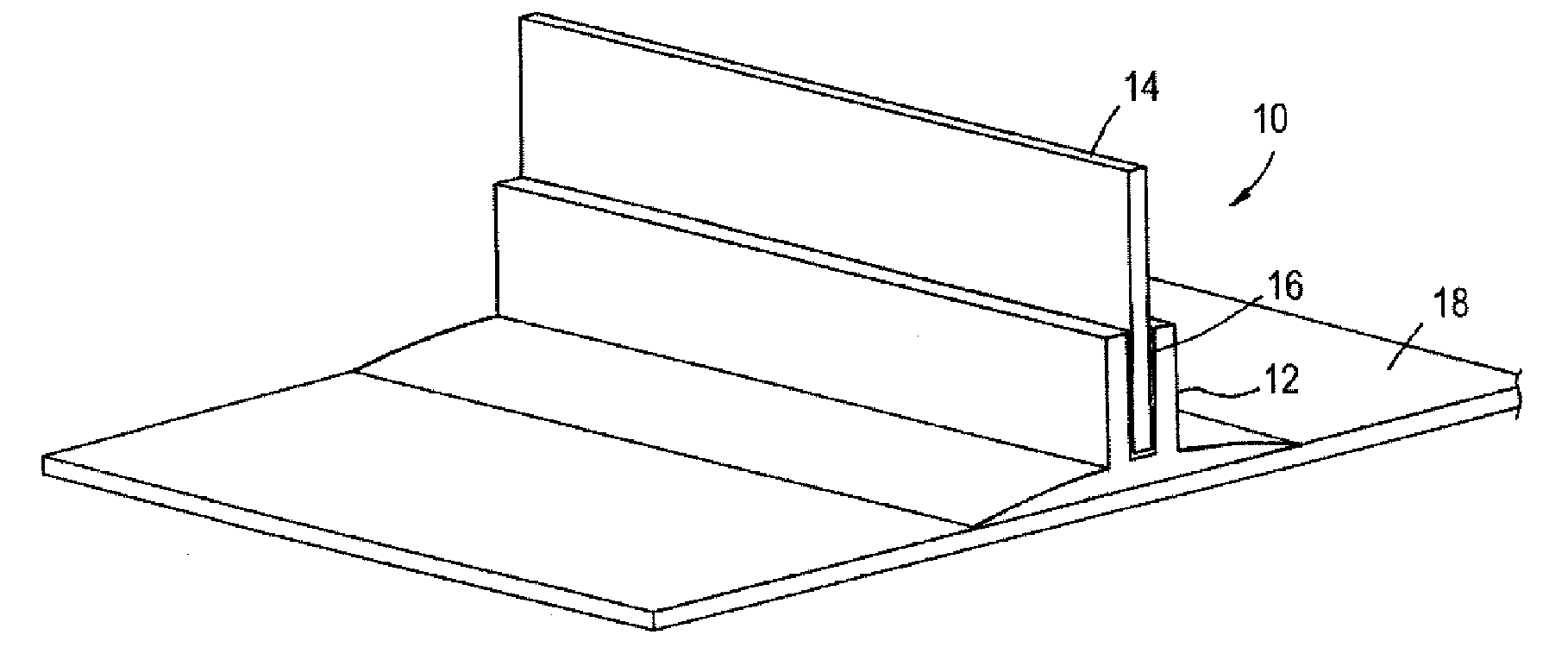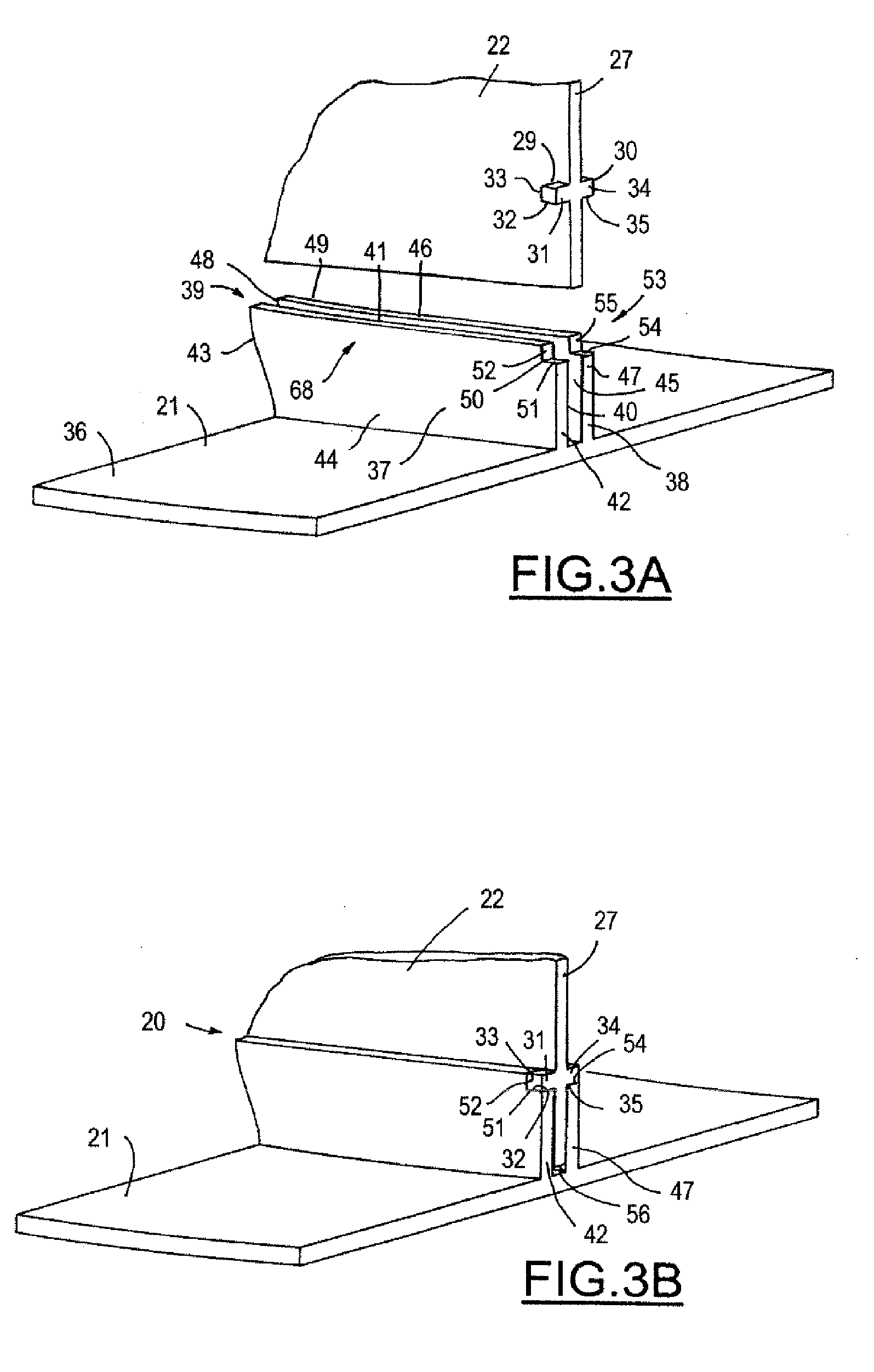Self-locating feature for a pi-joint assembly
a self-locating and assembly technology, applied in the field of pi-joint assembly and method, can solve the problems of non-value-added work, complicated assembly procedures, etc., and achieve the effect of reducing was
- Summary
- Abstract
- Description
- Claims
- Application Information
AI Technical Summary
Benefits of technology
Problems solved by technology
Method used
Image
Examples
second embodiment
[0043]FIG. 4 is an isomeric view of a self-locating feature for a pi-joint assembly 70 in accordance with a second embodiment the present invention being used to advantage. The assembly 70 includes a member 71, a substructure 72 connected to the member 71, and a filler 77. The substructure 72 has two lands 73, 74, a boss 75 located on the front side of the substructure and a boss 76 located on the back side of the substructure. The two lands 73, 74 are positionally oriented into the two notches of the member 71, thereby locating the horizontal and vertical direction of the leading side of the substructure 72 with respect to the member 71. The two bosses 75, 76 are positionally oriented at the trailing side upon of the pair of axially elongated legs, thereby locating the vertical direction of the trailing side of the substructure 72. The two lands 73, 74 and the two bosses 75, 76 together provide a single orientation by which the substructure 72 may be positioned into the member 71. ...
third embodiment
[0045]FIG. 5 is an isomeric view of a self-locating feature for a pi-joint assembly 78 in accordance with a third embodiment the present invention being used to advantage. The assembly 78 includes a member 79, a substructure 80 connected to the member 79, and a filler 85. The substructure 80 has four lands 81, 82, 83, 84. Two lands 81, 82 are located on the leading side of the substructure and two lands 83, 84 are located on the trailing side of the substructure. Of which, two lands 81, 83 are located on the front side of the substructure and two lands 82, 84 are located on the back side of the substructure. The lands 81, 82, 83, 84 are positionally oriented in opposite direction into the four notches of the member 79, thereby locating the horizontal and vertical direction of the leading side and the trailing side of the substructure 80 with respect to the member 79. Moreover, the inventive self-locating features of the lands as described herein enable the precise depth control and ...
PUM
| Property | Measurement | Unit |
|---|---|---|
| Angle | aaaaa | aaaaa |
| Area | aaaaa | aaaaa |
| Depth | aaaaa | aaaaa |
Abstract
Description
Claims
Application Information
 Login to View More
Login to View More - R&D
- Intellectual Property
- Life Sciences
- Materials
- Tech Scout
- Unparalleled Data Quality
- Higher Quality Content
- 60% Fewer Hallucinations
Browse by: Latest US Patents, China's latest patents, Technical Efficacy Thesaurus, Application Domain, Technology Topic, Popular Technical Reports.
© 2025 PatSnap. All rights reserved.Legal|Privacy policy|Modern Slavery Act Transparency Statement|Sitemap|About US| Contact US: help@patsnap.com



